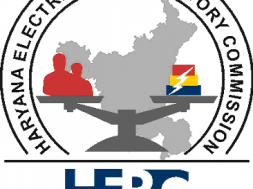
U.S. Department of Energy Invests US$2.91 Billion and Issues Documents Promoting Development of Local Battery Industry – EQ Mag Pro
After announcing that it will invest US$7.5 billion to build 500,000 charging piles, the United States makes new moves in the field of transportation.
Recently, the U.S. Department of Energy (DOE) issued two notices to provide a total of US$2.91 billion in funding to promote battery material refining and the construction of battery material processing facilities, battery pack manufacturing facilities, and recycling facilities.
It has been reported that the first notice states an expected disbursement of approximately US$2.8 billion to subsidize research and development in the field of electric vehicle battery processing and increase battery manufacturing. The overall scope includes battery-grade precursor materials, battery components, and demonstration and commercial facilities for battery manufacturing and recycling. The second notice stated that approximately US$60 million would be provided to fund research, development, and demonstration of electric vehicle battery recycling and secondary use applications.
Currently, this policy has not been formally implemented and the US Department of Energy may provide funds to support domestic electric vehicle battery production in the United States around April to May 2022.
Since Biden was elected US president, the US government under his leadership has issued a series of policies to support the development of the US industrial and automotive industries. Especially in recent months, the Biden administration has issued a number of funding policies.
In November last year, the U.S. government signed a US$1 trillion infrastructure investment bill to renovate aging infrastructure including roads, railways, bridges, and build high-speed communication networks. A week later, the U.S. House of Representatives passed the US$1.75 trillion Build Back Better Act, which includes tax breaks of up to $12,500 per vehicle to spur consumer adoption of electric vehicles.
The United States has recently introduced a number of support policies in infrastructure construction, especially in the electric vehicle industry, which is relevant to the relatively unsound state of said industry.
In terms of gasoline vehicles, the United States is the second largest auto market after China. In terms of electric vehicles, the United States has become the third largest electric vehicle market in the world.
Thanks to China’s early deployment in the electric vehicle industry, China has formed a relatively complete electric vehicle industry chain. Especially in the field of power batteries, highly competitive companies such as CATL and BYD have emerged. In recent years, moving towards the goal of carbon neutrality, the European market has introduced a number of stringent policies to encourage the development of the electric vehicle industry and the popularization of electric vehicles. At present, the European market has surpassed the United States to become the second largest electric vehicle market in the world.
In the context of the introduction of relevant policies in the two major regions of China and Europe, the United States has taken relatively few actions in this regard. Perhaps after realizing that it has fallen behind in the promising electric vehicle industry, the Biden administration has recently increased its focus on electric vehicles.
According to the U.S. Bureau of Transportation Statistics, approximately 761,000 new energy vehicles, including hybrids, plug-in hybrids, and electric vehicles, were sold in the U.S. in 2020, accounting for less than 0.5% of total vehicle sales. Comparatively, new energy vehicles sold in China during the same period accounted for 40.7% of global sales.
In order to promote the development of electric vehicles in the United States, Biden set a “small goal” last year: by 2030, half of all cars sold in the United States will be new energy vehicles, including battery electric vehicles, plug-in hybrid vehicles, and fuel cell vehicles.
The development of the electric vehicle industry is inseparable from the power battery. At present, the electric vehicles produced by American manufacturers rely heavily on foreign companies. Most of the companies that build power batteries in the United States are Japanese and Korean companies such as LG Chem, Panasonic, and SKI.
In response to this situation, the U.S. Department of Energy issued four policies last June:
Provide US$200 million for power battery research and development.
Provided US$17 billion in loan support.
Advance energy storage applications.
Support the “National Blueprint for Lithium Batteries 2021-2030” developed by the Federal Consortium for Advanced Batteries.
With the support of this series of policies, some companies have already taken action in terms of power batteries.















